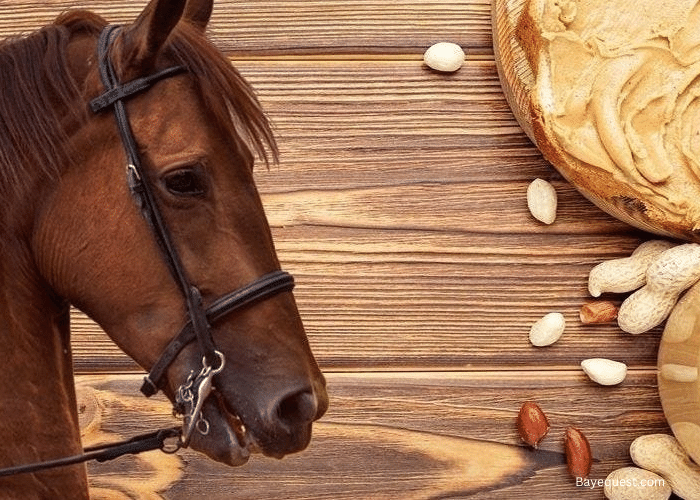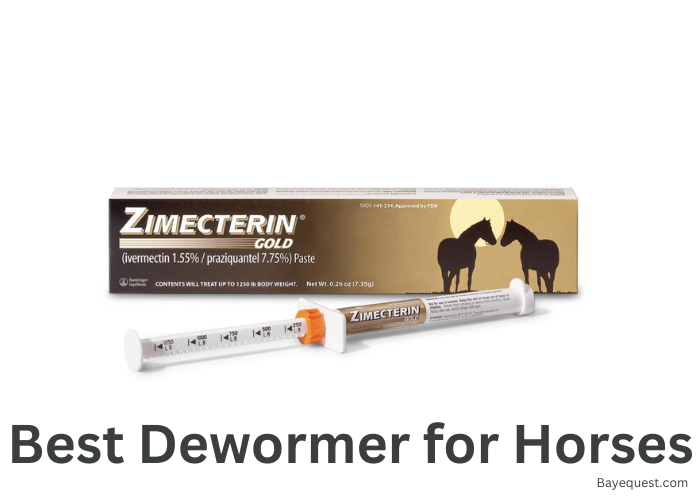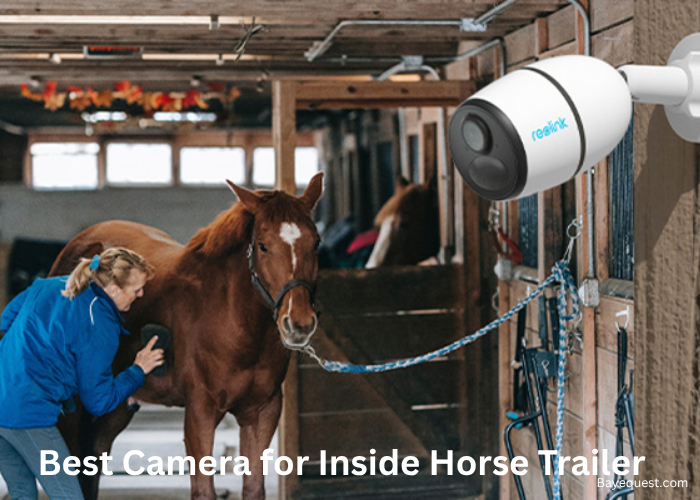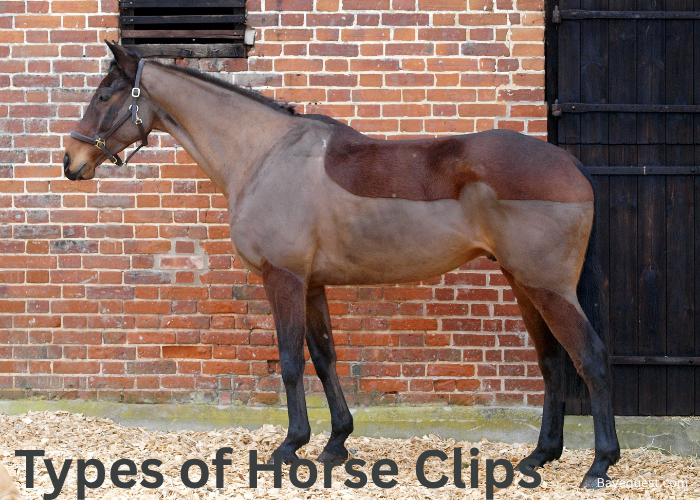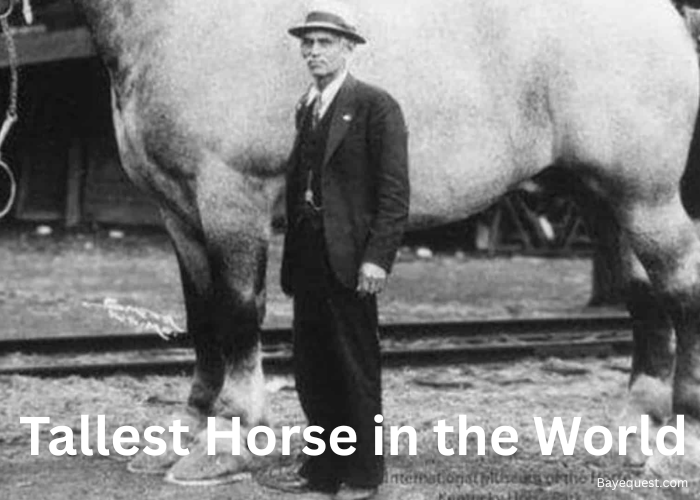Ever wondered if horses can enjoy the sticky delight of peanut butter just like we do? Well, you’re not alone. This odd question has bounced around in the minds of many horse owners.
After all, who doesn’t want to share their favorite snack with their four-legged friends? But before you reach for that peanut butter jar and slather it on a carrot as a horsey treat, let’s take a moment.
There’s more to consider when feeding our equine pals this tasty spread. So, saddle up as we dive into the nutty details of peanut butter and horses.
Can Horses Have Peanut Butter?
Yes, horses can have peanut butter, but it’s complicated. You see, while a little peanut butter won’t hurt most horses, there are some things you need to watch out for.
First, it’s packed with fat and calories, which isn’t ideal for your horse’s diet, especially if they don’t exercise much. Also, you must ensure the peanut butter doesn’t contain xylitol, a toxic horse sweetener.
And because it’s so sticky, it can be a choking hazard. So, if you give your horse some peanut butter, it should be a rare treat and only in small amounts.
What is Peanut Butter?
Peanut butter is a creamy, sticky spread made mainly from ground peanuts. It’s usually mixed with salt, oil, and sweeteners to boost the flavor.
It’s popular worldwide, loved for its rich, nutty taste and the way it sticks to the roof of your mouth. People use it in various ways: on bread, smoothies, or even cookies and cakes.
It’s packed with protein and has a fair amount of good fats, which makes it a favorite for folks looking for a tasty yet somewhat healthy snack.
Can Horses Eat Peanut?
Yes, horses can eat peanuts, but it’s all about moderation. Peanuts are like a little treat, not a main course.
They’re protein-packed and can be a tasty snack for your horse. But here’s the kicker: you’ve got to make sure they’re plain and unsalted.
Fancy flavors and added salt are not great for your horse. And always remember, peanuts should be given in small amounts.
Think of them as the occasional delight rather than a daily treat. After all, you wouldn’t want your horse to become a peanut fanatic and turn its nose up at regular feed.
Can Colts Eat Peanut Butter?
Yes, colts can technically eat peanut butter, but it’s best to be cautious. Young horses, like colts, have sensitive digestive systems.
Feeding them peanut butter, which is high in fat and added sugars, might not be the best idea, especially in large amounts. Due to its sticky consistency, you must consider potential allergens and choking hazards.
If you’re thinking about giving peanut butter to a colt horse, it should be minimal and only on rare occasions. And, as always, check with your vet first. They can give you advice tailored to your colt’s health needs and diet.
Can Horses Have Peanut Powder?
Yes, horses can have peanut powder. In fact, peanut powder might be a safer option than peanut butter because it lacks the added oils and sugars typically found in peanut butter. It’s also less sticky, so there’s a lower risk of choking.
Peanut powder can offer some protein and can be a nice change in flavor for your horse’s diet. However, it should still be used in moderation.
Always ensure the peanut powder is pure without added sweeteners or flavors, especially xylitol, which is toxic to horses.
Are Peanut Butter Cookies Safe for Your Horse?
Peanut butter cookies aren’t the best treat for your horse. Why, you ask?
Well, these cookies often come packed with sugar, fats, and sometimes even chocolate, which is a big no-no for horses. Even if they’re just plain peanut butter cookies, the sugar and fat content is higher than ideal for a horse’s diet.
If you’re itching to share a snack with your four-legged buddy, it’s better to stick with simpler, healthier options like a slice of apple or a carrot. They might not be as exciting as cookies, but they’re much safer.
So, save the cookies for yourself and give your horse something that keeps them healthy and happy.
Read also: Health Risks of Feeding Your Horse Chocolate.
Can a Horse Eat Peanut Butter Sandwich?
A horse could munch on a peanut butter sandwich, but should it? No. It’s not the best idea.
Here’s the scoop: the bread and peanut butter combo is quite high in calories and not really part of a horse’s usual diet, which should be low in sugar and starch.
Plus, there’s the sticky situation—literally. Peanut butter’s gooey nature can make it a choking hazard for horses.
So, while sharing your lunch might seem like a friendly gesture, it’s safer to stick to horse-approved treats like hay cubes or a nice crunchy apple. Keep the sandwiches for your picnics and treat your horse to something more in their dietary lane.
Related read: Can horses eat bread?
Do Horses Like Peanut Butter?
It can vary from horse to horse. Some might find the taste and texture of peanut butter appealing, while others might not be fans.
Horses are individuals with their own preferences, just like people. However, because peanut butter is not a natural part of a horse’s diet, they don’t naturally prefer it as they do for grass or grains.
Remember to choose a safe, xylitol-free brand if you ever decide if your horse likes peanut butter. It’s also good to check with your vet first, as they can provide guidance based on your specific horse’s health needs and diet.
Interesting read: Will a Horse Eat Meat?
Health Benefits of Peanut Butter to Horses
While peanut butter is not a typical food for horses and should generally be offered as a treat, it does have nutritional benefits that could be advantageous when fed appropriately.
Here are some potential health benefits of peanut butter for horses:
High in protein
Peanut butter is a good source of protein, which is essential for muscle maintenance and growth in horses. This is beneficial for active horses that need additional protein to help with muscle repair.
Healthy fats
The fats found in peanut butter are mostly unsaturated and can help provide sustained energy. These healthy fats are also important for maintaining good skin and coat condition.
Vitamins and minerals
Peanut butter contains vitamins and minerals, including vitamin E, magnesium, and potassium.
Vitamin E is an antioxidant that helps protect the body’s cells from damage. Magnesium supports muscle and nerve function; potassium is crucial for proper heart function.
Palatability
For horses that might be picky eaters, mixing a small amount of peanut butter can make these less palatable items more appealing. This can help ensure that the horse receives its necessary treatments or nutrients.
Nutritional Content of Peanut Butter
Here’s a table detailing the nutritional content of peanut butter, per 100 grams. This information provides a good overview of what peanut butter offers nutritionally:
| Nutrient | Amount in 100 grams |
| Calories | 588 kcal |
| Protein | 25 g |
| Total Fat | 50 g |
| – Saturated Fat | 10 g |
| – Monounsaturated Fat | 24 g |
| – Polyunsaturated Fat | 14 g |
| Carbohydrates | 20 g |
| – Dietary Fiber | 6 g |
| – Sugars | 10 g |
| Vitamins and Minerals | |
| – Vitamin E | 6.3 mg |
| – Magnesium | 168 mg |
| – Potassium | 649 mg |
| – Calcium | 43 mg |
| – Iron | 1.9 mg |
Organic Vs. Inorganic Peanut Butter
When comparing organic and inorganic peanut butter, various features emerge that distinguish one from the other, each appealing to different consumer needs and preferences:
1. Farming practices
Organic peanut butter is made from peanuts grown without synthetic pesticides or fertilizers. The emphasis is on maintaining natural soil and plant health, which may lead to a more environmentally friendly product.
Inorganic peanut butter involves the use of synthetic chemicals in the growing process. These might increase yield and reduce costs, but they also raise concerns on residual chemicals.
2. Ingredients
Organic peanut butter contains only peanuts and possibly a small amount of salt. This minimalistic approach avoids unnecessary additives.
Inorganic peanut butter often includes additional ingredients like sugars, hydrogenated oils, and fats. While this makes for a consistent and palatable product, it can also introduce unwanted calories and chemicals.
3. Flavor and texture
Organic peanut butter has a more natural and robust peanut flavor, which can vary slightly between batches. Due to minimal processing, the texture might be less smooth and often described as gritty.
Inorganic peanut butter is Engineered for a smooth, consistent flavor enhanced by additives. This makes it quite palatable for those accustomed to processed foods. The texture is usually very creamy and uniform.
4. Health implications
Organic peanut butter has fewer additives, organic peanut butter is often considered healthier. It’s closer to its natural state, potentially retaining more nutrients.
Inorganic peanut butter has added sugars and fats that may compromise its nutritional value, potentially negatively impacting health, especially regarding weight gain and heart health.
5. Cost and availability
Organic peanut butter is more expensive due to the higher costs associated with organic farming methods. It might not be as readily available as inorganic versions, often found in health food stores.
Inorganic peanut butter is usually less expensive. It’s widely available in most supermarkets, making it accessible to a broader audience.
6. Shelf life
Due to the absence of preservatives, organic peanut butter may have a shorter shelf life, meaning it needs to be consumed more quickly after opening.
Inorganic peanut butter often contains preservatives that extend its shelf life, making it a more convenient option for those who do not frequent the grocery store.
How Much Peanut Butter Can a Horse Eat?
When considering feeding a horse peanut butter, you must consider moderation. Peanut butter isn’t a standard part of a horse’s diet, but it can be safely given in small amounts as a rare treat.
A teaspoon of peanut butter is sufficient for a horse, providing a taste without taxing their digestive system. Due to its high fat and sugar content, peanut butter should be used sparingly.
Ensure the peanut butter is plain and free from harmful additives like xylitol. The sticky texture of peanut butter also requires careful feeding to avoid choking hazards.
What Kind of Peanut Butter is Best for Your Horse?
When picking out peanut butter for your horse, keep it simple and safe. The best kind is plain, unsweetened, and unsalted.
Look for natural peanut butter that lists just one ingredient: peanuts. This type has no added oils, sugars, or salt, which are better left out of your horse’s diet.
Most importantly, make sure the peanut butter is free from xylitol, an artificial sweetener toxic to horses. Remember, even with the right peanut butter, it should only be a rare treat for your horse, not a regular part of their diet.
How to Feed Horses Peanut Butter
Feeding peanut butter to a horse is something you want to do carefully and sparingly. Here’s a simple way to go about it:
First, pick a natural, unsweetened, and unsalted peanut butter. Check that it doesn’t contain xylitol, which is harmful to horses.
Then, use just a small amount. A teaspoon will do.
You can spread it on a slice of apple or a carrot to make it more appealing and easier for your horse to eat. This also helps with the sticky texture of the peanut butter, reducing the risk of choking.
Always introduce it slowly into their diet and monitor how they react. Treats like peanut butter should only be given occasionally and not as part of the regular diet.
Homemade Peanut Butter Treats for Horses
Making homemade peanut butter treats for horses can be a fun way to provide a special reward. However, you need to keep their health and dietary needs in mind.
Here’s a simple recipe for horse-friendly peanut butter treats:
Ingredients:
- 1 cup natural peanut butter (ensure it’s unsalted and unsweetened, and free of xylitol)
- 1 cup grated carrot or chopped apple
- 2 cups oats
- 1/2 cup flour (optional, can use coconut flour for a grain-free option)
- 1/4 cup unsweetened applesauce or a mashed banana for binding
Instructions
Preheat the oven: Set your oven to 350 degrees Fahrenheit (175 degrees Celsius).
Mix ingredients: In a large bowl, combine the peanut butter, grated carrot or apple, and applesauce or mashed banana. Mix these until well combined.
Add dry ingredients: Gradually add the oats and flour to the mixture. Stir until everything is evenly mixed. If the mixture seems too sticky, add a little more flour; if it’s too dry, a bit more applesauce.
Form the treats: Use your hands or a spoon to form small, bite-sized balls or flatten them into cookie shapes on a baking sheet lined with parchment paper.
Bake: Place the treats in the oven and bake for about 15-20 minutes or until they are firm and lightly browned.
Cool down: Let the treats cool completely before offering them to your horse. This is important to ensure they’re easy to chew and digest.
Tips
Serving size: Remember, these treats are still a treat! Even though homemade, they should be given sparingly to avoid upsetting your horse’s diet.
Storage: The treats can be stored in an airtight container in the refrigerator for up to a week or frozen for longer storage.
Can I Mix Peanut Butter with My Horse’s Regular Feed?
Mixing peanut butter with your horse’s regular feed isn’t generally recommended. Peanut butter is high in fat and sugar, which can disrupt the balance of a horse’s diet.
It’s also sticky, which could cause the feed to clump together, potentially posing a choking hazard or making it difficult for the horse to eat.
If you want to enhance your horse’s feed, consider safer alternatives like adding a bit of chopped apple, carrot, or even a small amount of molasses.
Always consult with a veterinarian before introducing any new ingredients into your horse’s diet to ensure it’s safe and appropriate for their specific health needs and conditions.
Risk of Giving Too Much Peanut Butter to Your Horses
Even though it might seem like a tasty treat, giving too much peanut butter to horses can lead to a few problems.
First, peanut butter is high in fat and calories. That can be a big issue, especially for horses that don’t get much exercise or are prone to weight gain.
A chubby horse isn’t just about looks. It can seriously affect their health, increasing the risk of diseases like laminitis, which is painful and can be quite serious.
Then there’s the sugar content in most peanut butter. Too much sugar can mess with a horse’s energy levels and overall health, leading to more spikes and crashes than a roller coaster. Not what you want for your horse.
Also, peanut butter’s sticky, thick nature can be a choking hazard. It’s tough to swallow and doesn’t break down easily, so there’s a real risk it could get stuck.
Lastly, some peanut butter contains ingredients that are no-gos for horses, like xylitol, a toxic sweetener, or too much salt.
So, while a bit of peanut butter here and there as a treat is usually okay if your vet gives the thumbs up, it’s best to keep it minimal. Your horse’s health will be better for it in the long run.
When to Avoid Peanut Butter for Your Horse
There are certain times when you should definitely skip the peanut butter for your horse.
If your horse is overweight or prone to conditions like laminitis, peanut butter isn’t a good choice because of its high fat and calorie content. Also, if your horse has a sensitive stomach or dietary restrictions, peanut butter’s added sugars and fats might cause more harm than good.
Another key point is to check the ingredients. If the peanut butter contains xylitol, an artificial sweetener toxic to horses, steer clear. And even too much salt in the peanut butter can be bad for your horse’s health.
Lastly, if your horse doesn’t exercise much, the extra calories from peanut butter can lead to weight gain, bringing health issues.
So, in these cases, it’s better to find a healthier, more suitable treat to keep your horse happy and healthy.
Signs That Your Horse is Allergic to Peanut Butter
If your horse is allergic to peanut butter, you’ll want to catch the signs early to prevent discomfort or worse. Here’s what to keep an eye out for:
First, watch for any changes in their skin. Allergic reactions often appear as hives, itching, or swelling, particularly around the face and ears.
Another big red flag is respiratory trouble. If your horse starts coughing, wheezing, or showing signs of breathing difficulties after eating peanut butter, that’s a clear sign of an allergic reaction.
Digestive upset is another common symptom. Signs like diarrhea or colic show that the horse’s stomach isn’t happy. If your horse shows unusual behavior, like increased agitation or discomfort, that might also be a clue.
Remember, these symptoms can come on quite quickly after eating peanut butter. If you notice any of them, call your vet right away.
Alternative Treats for Your Horse
When treating your horse, there are plenty of safer and healthier alternatives to peanut butter. Here are some great options that most horses will love and can safely enjoy:
- Carrots
- Apples
- Hay cubes
- Sugar-free horse treats
- Watermelon
- Mint Leaves
- Oats
- Bananas
- Pears (Interesting read: Can Horses Eat Canned Pears?)
- Blueberries
- Strawberries
- Pumpkins
- Squash
Conclusion
So, can horses eat peanut butter? Sure, they can—but maybe they shouldn’t make a habit of it. Think of peanut butter as that dessert you allow yourself only occasionally, not the main course.
It’s sticky, it’s nutty, and while it might make your horse’s taste buds do a little happy dance, it’s best served up in tiny, occasional doses. And remember, just like us, every horse is different. What works for one might not suit another.
So keep those vet visits regular, and maybe save the peanut butter for your own sandwiches.




